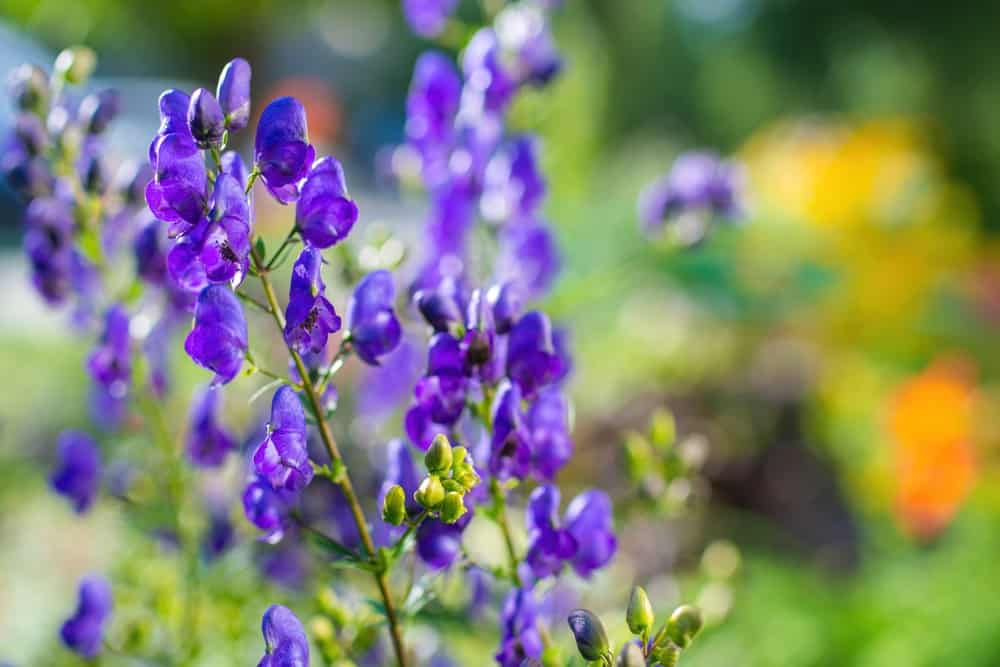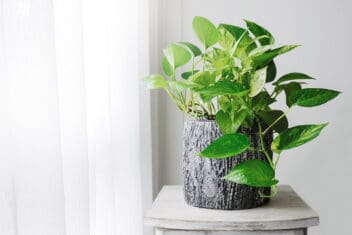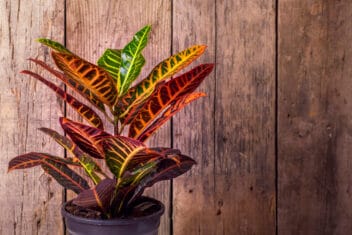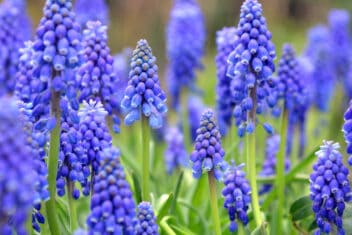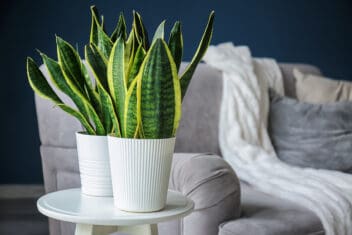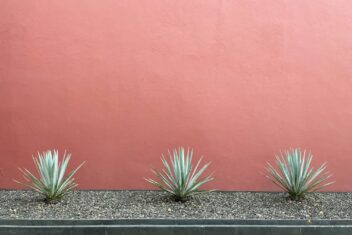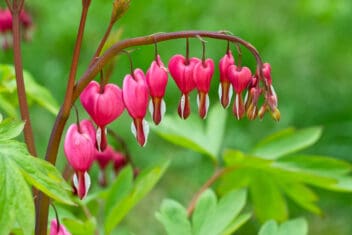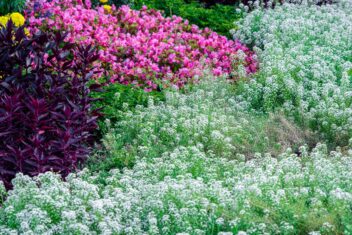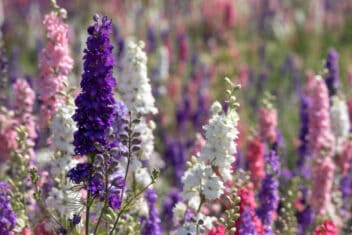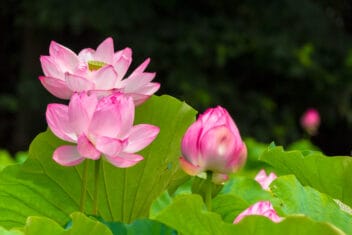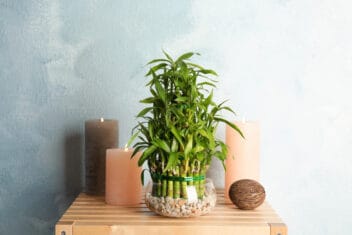I have a few requirements for garden color these days as I get busier with many homestead tasks. The plant must be easy to grow and not be fussy, and it should preferably be a perennial so that I plant it once and then maintain it each year when I can.
Monkshood fits the bill, and on top of that, it is a stunner in the garden once it starts blooming. Don’t fall into the trap that flowers and color are hard work. Monkshood will dispel that myth straight away.
So, if you want easy, fuss-free color, let’s look into everything that is monkshood.
What is Monkshood?
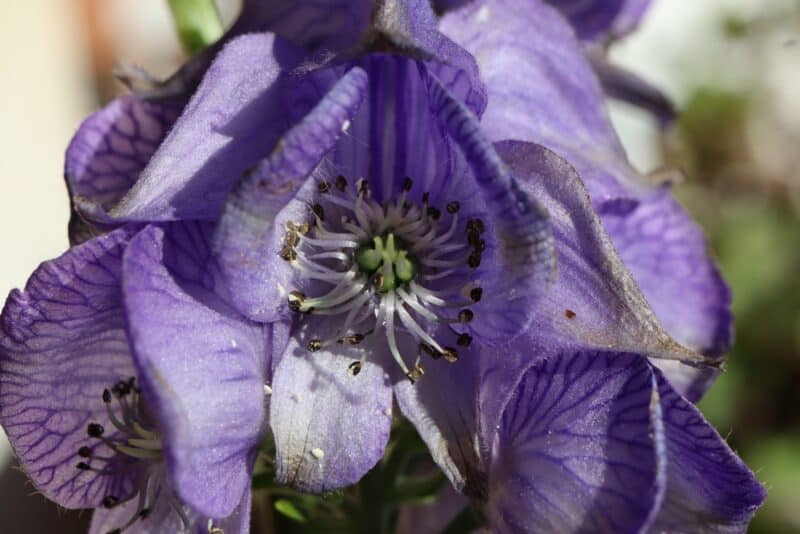
Monkshood (Aconitum spp.) is a hardy perennial native to Asia and Europe. It’s also known by many other names, such as wolf’s bane, mouse bane, devil’s helmet, queen of poison, or blue rocket.
This plant is often found in mountain meadows in the northern hemisphere, especially along streams and ponds.
Monkshood flowers come in white, pink, blue, and yellow and form on long, strong stems. The blooms begin in mid-summer to mid to late fall. In the right environment, they may bloom up to the first frost in winter when mother nature tells us it’s time to cut the plant back.
Monkshood is very toxic, so wear gloves when handling it. Don’t plant where children congregate or play. It’s also toxic to animals like cats and dogs as well.
Best Cultivars of Monkshood
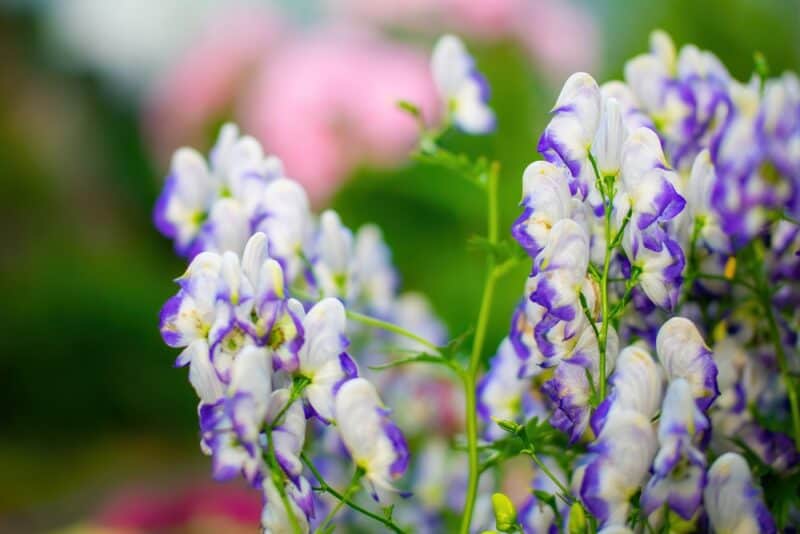
Monkshood comes from the genus Aconitum, which has over 250 species. The most common variety as a garden ornamental is the species A. napellus. But you’ll also see A. carmichaelii and hybrids.
Sometimes it is sold as common monkshood or wolf’s bane, and it doesn’t differentiate the cultivar, but there are cultivars out there. Look for the following:
Albus
‘Albus’ produces pure white blooms reliably in early summer. It will grow between three to four feet tall, and two feet wide.
This common cultivar of monkshood grows well in containers in shady or cool areas and is perfect for cut flower arrangements as long as you know its toxic effects if handled.
Blue Sceptre
This is a bi-colored monkhood with blue and white flowers. It is a dwarf cultivar that is compact and will grow just over two and a half feet tall. You can divide this plant after about four years of growth.
Ivorine
This is another dwarf cultivar with creamy white blooms. ‘Ivorine’ only grows to about two feet tall. Try this one in pots or as a border.
Newry Blues
This blue-bloomed cultivar will grow up to five feet tall. It forms lots of flowers and, by late summer, is a wall of blue.
Rubellum
‘Rubellum’ has lovely pink blooms with fine, deep green foliage. The maximum height is between four to five feet. This cultivar forms solid clumps suitable for dividing with reliable results.
How to Propagate Monkshood
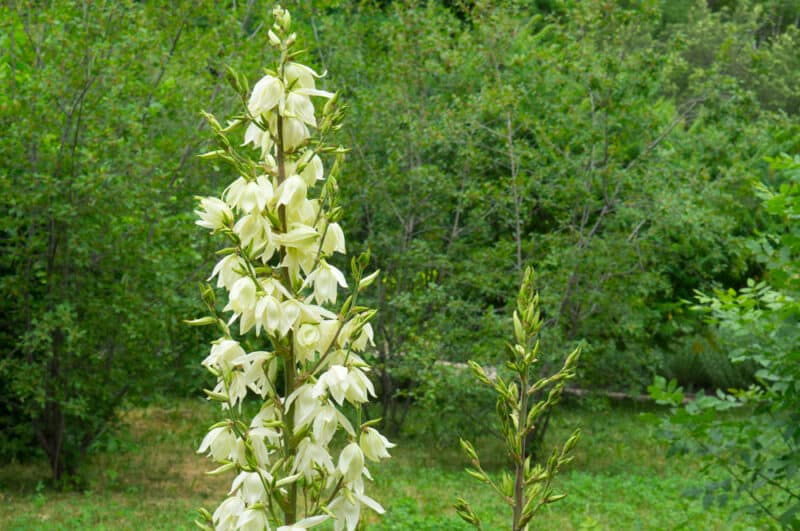
The most reliable way to propagate monkshood is by dividing the roots. This way, you will get a true copy of the plant you are dividing. If you use seeds, they don’t grow true to the mother plant, so the variations are unpredictable.
Remember, always wear gloves when doing anything with monkshood. All parts can be irritating to the skin.
Division
You will need to cut the plant back to slightly above ground level. Ensure you have added plenty of well-rotted organic matter to the new planting area before you go to work. The best time to do this is at the beginning of spring or at the end of fall.
- Dig the entire root clump up once you have cut the entire plant back to ground level.
- You can gently pull the tuberous sections apart. Make sure there are one or more tuberous sections with stems attached per divided part.
- Replant immediately. The top of the tuber should be an inch under the soil.
- Mulch the new tuber with a thick layer of straw or similar. Make sure this stays in place for the new plant’s first winter. This is especially important if you live in an area with cold winters. Two to four inches of depth should be enough.
Seeds
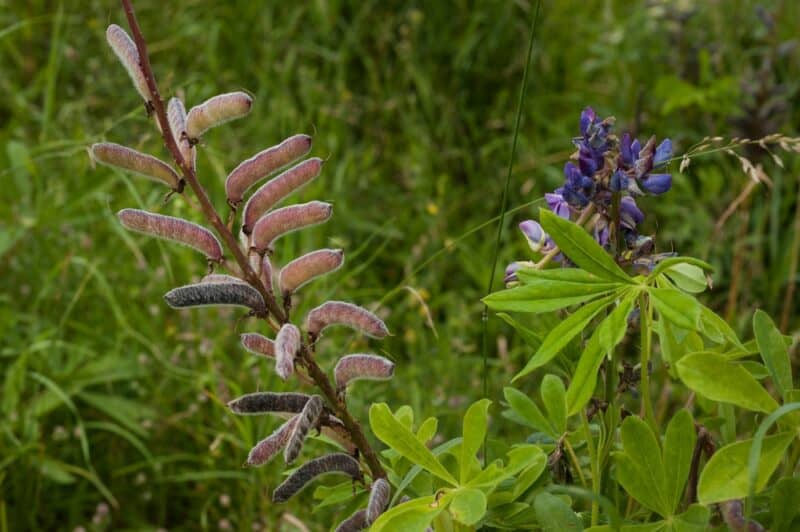
Planting monkshood seed is not for the faint-hearted since it can take up to two years after germination to get a viable plant, germination may not occur, and the seed never grows true to the mother plant.
Once the flowers stop blooming, the seed head emerges and gradually turns brown. Remove the seeds and use them as soon as possible. Monkshead seeds are not viable for long.
The best thing to do is sow your seeds directly in the ground in late fall or early winter, ready for the growing season. They do best when they naturally go through a period of dormancy from the cold.
If you want to plant the seeds in spring, start them inside, but it’s a labor of love.
- Place seed-raising mix in a sealable bag and moisten it well with water.
- Press the seeds into the soil and put them in the freezer for three weeks.
- Remove the bag from the freezer and allow everything to thaw out.
- Put seed-raising mix in containers and plant the seeds 1/8 inch deep.
- Place the containers in an area with a temperature of 55-60ºF.
- Wait for germination, making sure to keep the soil moist. This may take several weeks or even a few months.
- When the plant is big enough to handle, plant it outside after hardening off. Growth after germination can sometimes take a long time. It might not flower for years.
- Once the plant is outside, it may die off and return. This is a natural cycle sometimes for monkshood. Be patient because if you dig the soil and replant it with more seedlings, you disturb the plants before regrowing.
How to Care For Monkshood
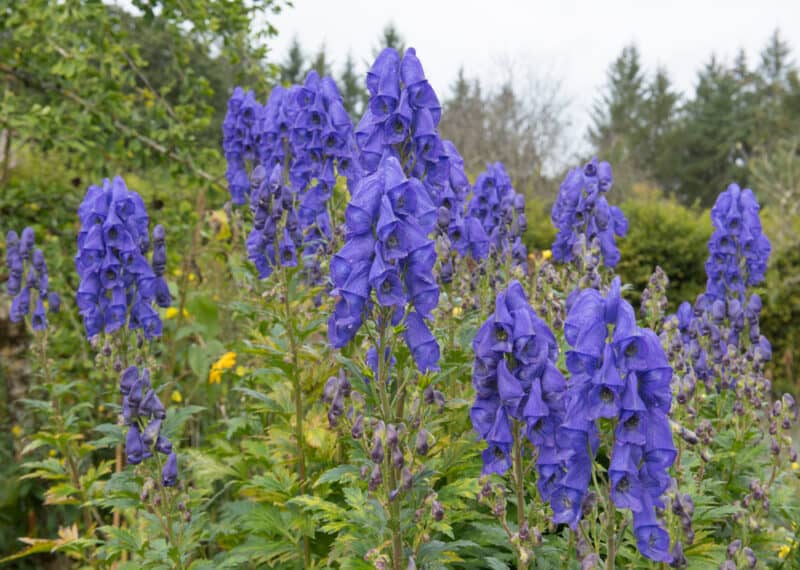
Monkshood grows well in USDA Hardiness Zones 3 to 8.
Aim for soil that is slightly acidic to neutral at 5.5 to 7.0 pH. A rich, porous loam is best. It must hold moisture well but drain freely. Monkshood will grow in all soil types, but follow the advice above for optimum results.
If the soil is dense, compact, or doesn’t drain well, you will likely cause root rot.
For a plant that isn’t fussy, monkshood sure likes its water. It must be consistently wet, but don’t let it become waterlogged. Springtime is a critical time for watering monkshood.
Ensure you water it regularly and don’t let it dry out. Once its initial growth period is over in spring, monkshood will be reasonably drought tolerant.
Give monkshood at least an inch of water per week, and you will be rewarded with lovely green foliage and lots of blooms.
Monkshood does well in shade or partial shade and will even do well in sun. Just ensure that if you live in a sweltering area with lots of sun, monkshood will need afternoon shade.
Fertilizing isn’t required if you have good-quality soil. If you think the monkshood is struggling, use a rose-specific fertilizer in spring. Feeding in early spring when the ground is warm gives the reemerging monkshood a much-needed boost.
Even if you’re not going to dig the roots up to divide them, cut the plant down to the ground in winter when it dies off, or frost kills it. It will regrow back next spring. Add mulch in winter in cold areas.
Even though monkshood is extremely toxic to humans and animals, you can still put it in your compost heap. When it breaks down and is incorporated into the compost, toxicity is no longer an issue.
Best Companion Plants for Monkshood
Plant monkshood with late perennials so that you get a luscious bloom-filled garden.
- Japanese anemones
- Autumn asters
- Astilbe
- Bearded Iris
- Roses
- Coneflower
- Wood Sage
Problems and Solutions For Growing Monkshood
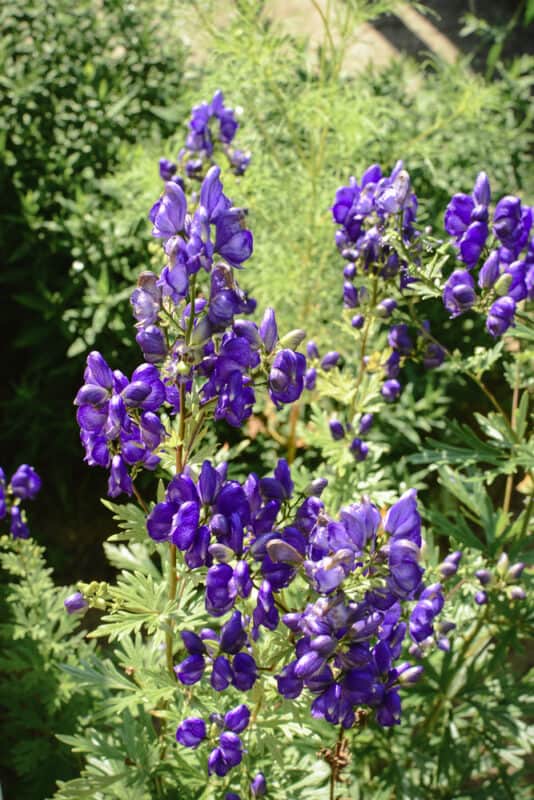
Monkshood isn’t usually bothered by pests, though aphids can become problematic. This is likely due to the plant’s toxicity. It can be affected by fungal diseases, though.
Verticillium Wilt
This is a soil-borne fungus that enters through the roots. Wilting leaves and die-back occur, and it’s during hot, humid weather and poorly draining soil that it often shows up.
Keep the area around the monkshood clear of weeds. Ensure soil is free draining, and if it’s a nasty infection, only plant resistant species.
Bacterial Leaf Spot
You will see this disease in many plants. Black spots appear on the leaves and, in bad cases, kill the foliage. Avoid overhead watering, and rotate crops and plants where you can. Use a fungicide at the first sign of the disease, and remove all old plant waste and debris immediately.
Root Rot
This is serious, especially if left untreated. If the foliage goes limp and yellow and the plant is struggling or dying, inspect it for root rot. Loosen the soil around the plant and then dig it out carefully. Inspect the roots and see if they are brown and mushy.
Sometimes you will smell a rotten odor. If all the roots are infected, discard the plant. Otherwise, cut away the infected roots and parts of roots and replant them in a different spot with fresh, well-draining soil.
Powdery Mildew
Powdery mildew is more common in plants growing in shady or wet areas. It causes powdery white fungal spores to form on leaves and stems. Read our in-depth article on how to identify and control powdery mildew.
